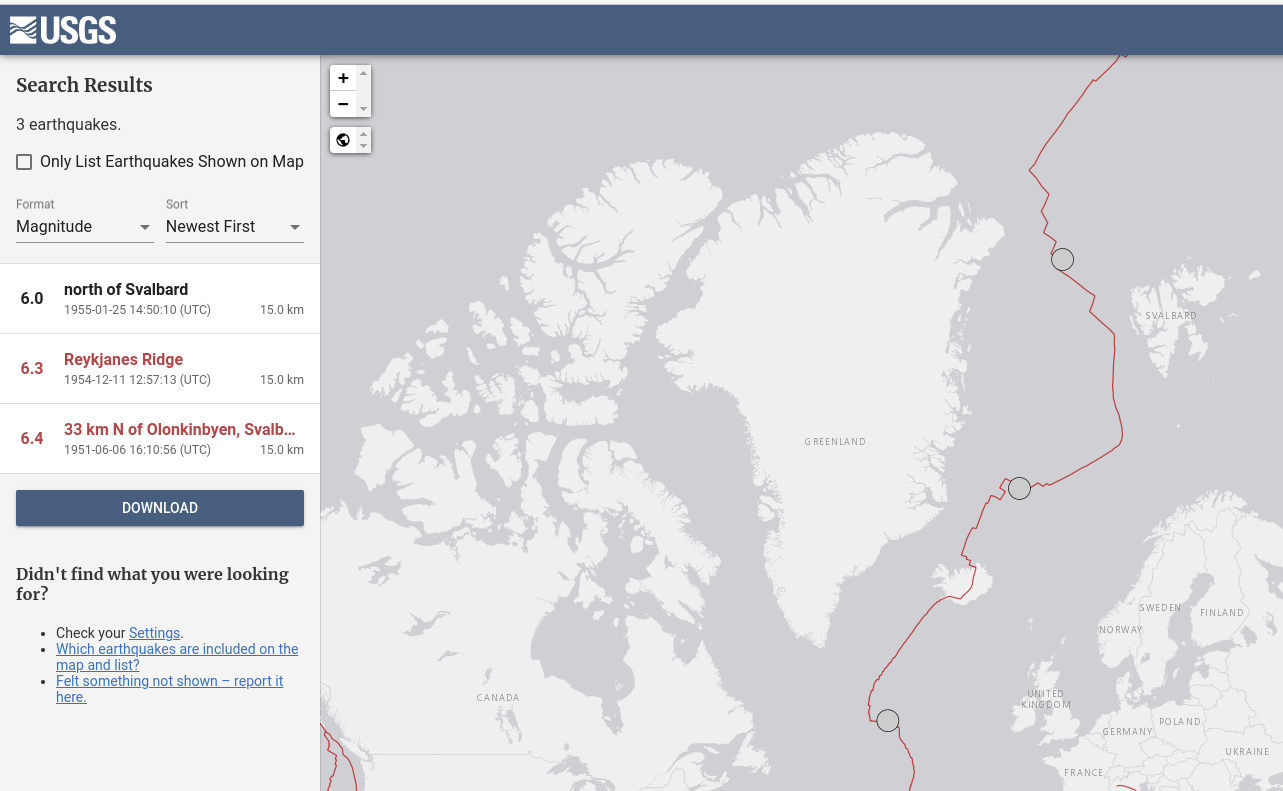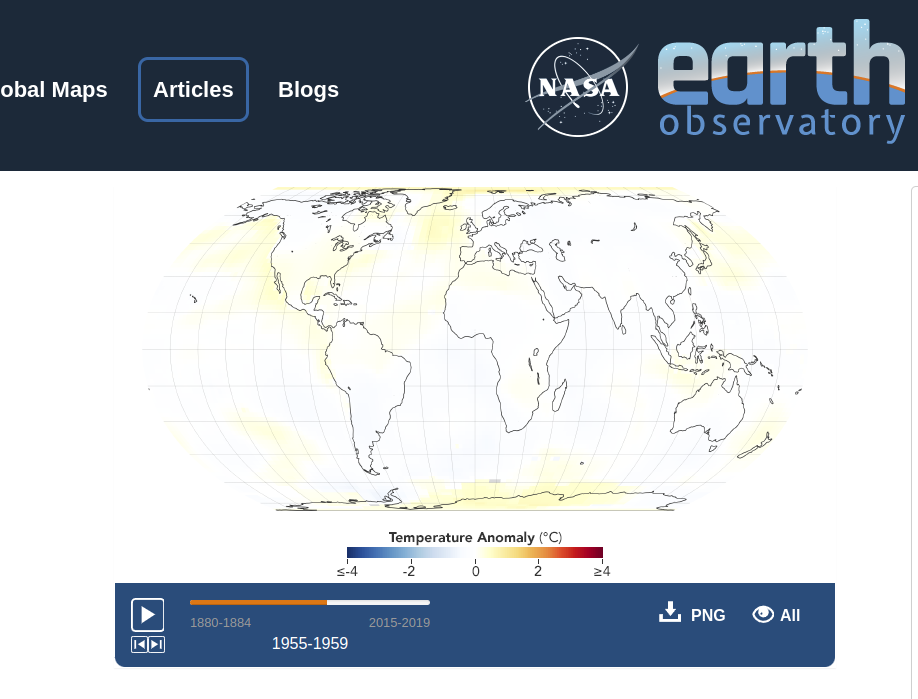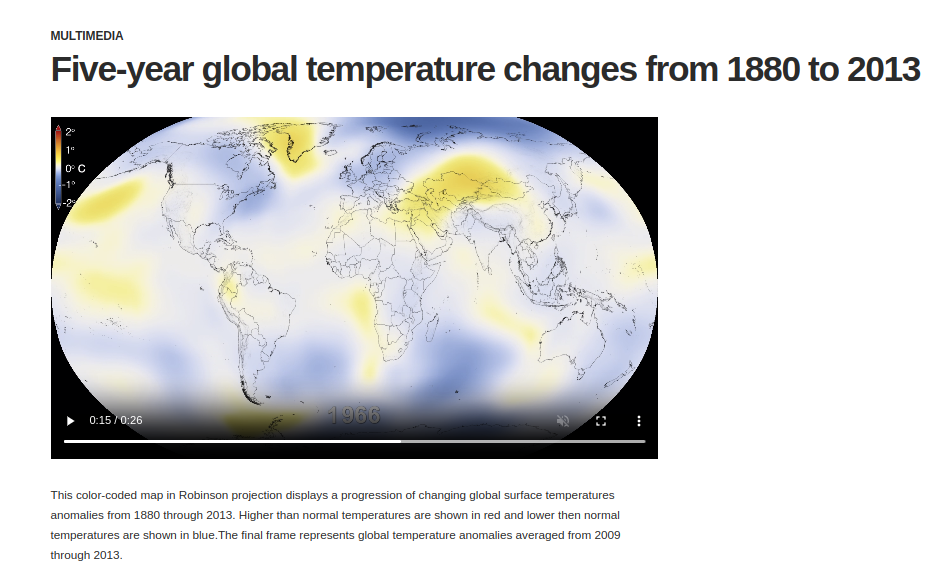Earthquakes and Deep Sea Vents
| Earthquakes and Deep Sea Vents23-11-2023 23:03 | |
| JLindgaard☆☆☆☆☆ (25) |
Google can translate. There were 3 magnitude 6.0 or greater earthquakes during the 1950's. Tilknyttet billede:  |
| 23-11-2023 23:07 | |
| JLindgaard☆☆☆☆☆ (25) |
Water temperature during the 1950's;
Tilknyttet billede:  |
| 23-11-2023 23:09 | |
| JLindgaard☆☆☆☆☆ (25) |
And in the 1960's. It is possible that the 3 major earthquakes in the 1950's closed deep sea vents. Notice how it's cooler in the Arctic which is whee the ocean current flowing along the coast of Norway goes. That current comes from the coast of Florida, U.S.
Tilknyttet billede: 
Redigeret d. 23-11-2023 23:11 |
| RE: Dr. Peder24-11-2023 21:42 | |
| JLindgaard☆☆☆☆☆ (25) |
Why I believe earthquakes open and close deep sea vents which changes temperatures in the oceans. Hvorfor jeg tror, at jordskælv åbner og lukker dybe havåbninger, som ændrer temperaturen i havene. Answer from ice core researcher Jørgen Peder Steffensen, Ph.D. Centre for Ice and Climate, Niels Bohr Institute, University of Copenhagen Men i Norden under istiden var klimaet også udsat for hurtige klimasvingninger, det vil sige en flip-flop fra kolde til meget kolde forhold. Denne flip-flop eller bipolære sav fortsatte med at forekomme under den langsomme og gradvise opvarmning fra 18.000 til 11.000 år siden. En række pludselige opvarmnings- og afkølingsbegivenheder fandt sted under den sidste istid. Disse er kendt som Dansgaard-Oeschger (D-O) begivenheder, opkaldt efter de videnskabsmænd, der opdagede dem. Hvad fortiden kan fortælle os om fremtiden for klimaændringer Læs mere De bedste registreringer af D-O-begivenheder kommer fra lange iskerner boret fra Grønlands indlandsis. Målinger foretaget på iskernerne afslører, at temperaturen over den grønlandske indlandsis blev opvarmet med 8 til 16°C ved hver begivenhed, nogle gange inden for årtier. De bratte opvarmninger blev efterfulgt af en mere gradvis afkøling, hvor de mest fremtrædende svingninger fandt sted 25 gange i løbet af den sidste istid. A series of abrupt warming and cooling events occurred during the last glacial period. These are known as Dansgaard-Oeschger (D-O) events, named after the scientists who discovered them. What the past can tell us about the future of climate change Read more The best records of D-O events come from long ice-cores drilled from the Greenland ice sheet. Measurements made on the ice cores reveal that temperatures over the Greenland ice-sheet warmed by 8 to 16°C at each event, sometimes within decades. The abrupt warmings were followed by a more gradual cooling, with the most prominent oscillations occurring 25 times during the last glacial period. https://pursuit.unimelb.edu.au/articles/the-rapid-climate-changes-of-the-last-glacial-period#:~:text=Measurements%20made%20on%20the%20ice,during%20the%20last%20glacial%20period. Google Chrome webbrowser kan oversætte. Google Chrome web browser can translate. With what I showed from NASA, when the arctic north of Europe cooled, this caused the heat content in the oceans and the atmosphere to shift. Just as the hole in the ozone layer above Antarctica causes greater spring warming in South Africa because the wind "changes directions", the same is true when the amount of heat being fed into the Gulf Stream/north atlantic current changes. The trade winds will change/shift because a "cool" area will have a lower atmospheric pressure. Med det, jeg viste fra NASA, fik dette, da det arktiske nord i Europa afkølede, varmeindholdet i havene og atmosfæren til at skifte. Ligesom hullet i ozonlaget over Antarktis forårsager større forårsopvarmning i Sydafrika, fordi vinden "ændrer retning", gælder det samme, når mængden af varme, der føres ind i Golfstrømmen/nordatlantisk strøm ændres. Passatvindene vil ændre/forskyde sig, fordi et "køligt" område vil have et lavere atmosfærisk tryk. Jørgen Peder Steffensen, Ph.D. changed his answer. He had said that the last ice age ended because of the Earth's favorable position to the Sun. I think he had to change his answer because it did not support increased levels of CO2. Jørgen Peder Steffensen, ph.d. ændrede sit svar. Han havde sagt, at den sidste istid sluttede på grund af Jordens gunstige position i forhold til Solen. Jeg tror, han var nødt til at ændre sit svar, fordi det ikke understøttede øgede niveauer af CO2. |
Deltag aktivt i debatten Earthquakes and Deep Sea Vents: